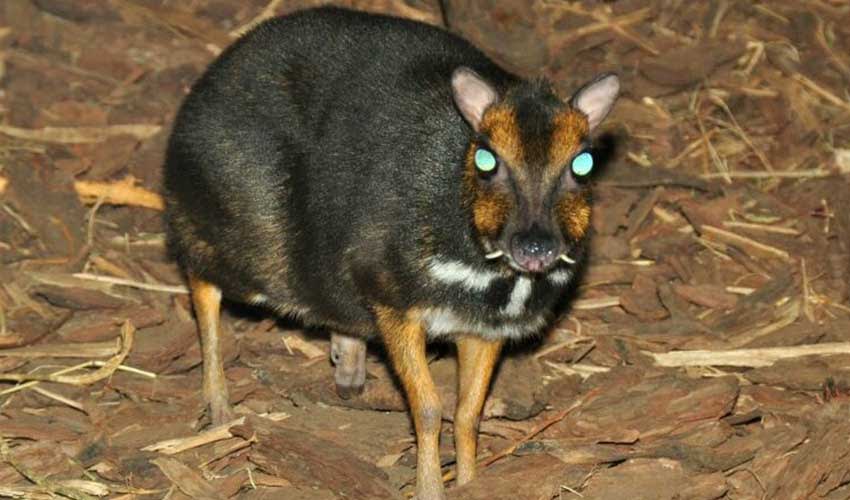Tragulus – Mouse-deer
The tiniest hooves on Earth
Despite their name, they are neither mice nor true deer—they belong to an ancient family called chevrotains, among the world’s smallest hoofed animals. Their miniature size makes them instantly recognizable: some species are no bigger than a rabbit, with the smallest weighing just about 2 kilograms (4 pounds). With their delicate legs, rounded bodies, and big dark eyes, they look like characters straight out of a fairytale forest.
Unlike true deer, they lack antlers; instead, males sport small, sharp canine teeth that they use in territorial disputes or to defend themselves. Their diets are mainly herbivorous, consisting of fruits, leaves, shoots, and sometimes fungi, but some mouse-deer have been known to nibble on insects or small animals, making them surprisingly flexible eaters. This adaptability helps them survive in habitats ranging from lowland rainforests to mangroves.
Another fascinating trait is their shy and secretive lifestyle. Mouse-deer are mostly nocturnal, coming out at night to forage while avoiding predators. They are solitary creatures, usually moving alone or in pairs, and they rely on silence and stillness to stay hidden. When startled, they can suddenly dash off with remarkable speed, darting into cover with their tiny hooves clicking softly on the forest floor.
Because of their small size and delicate appearance, they are sometimes called “living toys” or “fairy deer.” The smallest species, the lesser mouse-deer, is considered the tiniest hoofed animal on Earth, small enough to fit comfortably in a child’s arms. Their habit of standing perfectly still when threatened has earned them comparisons to statues, as if they believe invisibility comes from freezing in place. And unlike the dramatic antler battles of larger deer, male mouse-deer settle disputes with tooth duels, clashing their little fangs in comically fierce encounters.
Species in this genus
Philippine mouse-deer
Deeply rooted in Filipino culture that it was once featured on the Philippine one-peso coin


